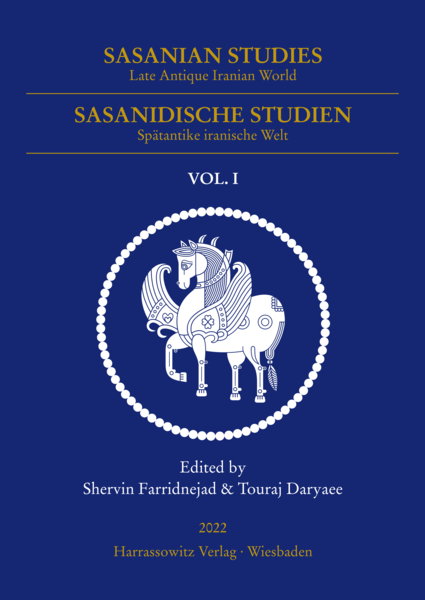نشریۀ مطالعات ساسانیان: جهان ایرانیِ دوران باستان متأخر نشریهای داوریشده است که در آن مقالات مربوط به همۀ جنبههای امپراطوری ساسانیان و تمدنهای همسایۀ آنها در دوران باستان متأخر منتشر میشود. در این نشریه از جستارها و مقالات با موضوع باستانشناسی، تاریخ هنر، کتیبهشناسی، تاریخ، سکهشناسی، مذهب و هر حوزۀ دیگری با تمرکز بر جهان ساسانیان استقبال میشود. این سالنامه بهویژه بر اکتشافات تازه در مطالعات تاریخنگاشتی و همچنین نسخ و ترجمۀ متون و کتیبهها تمرکز دارد. هدفِ این نشریه تسهیل گفتگو و ارتباط میان دانشوران حوزۀ مطالعات ساسانیان در سرتاسر جهان است. در این نشریه عمدتاً مقالات به زبان انگلیسی منتشر میشود؛ اما مقالات آلمانی، فرانسوی، ایتالیایی نیز پذیرفته است و فارسی و عربی نیز ممکن است بررسی شود.

فهرست مطالب این شماره:
- A Zoroastrian Cult Scene on Sasanian Stucco Reliefs at Bandiyān (Daregaz, Khorāsān-e Razavī)| Samra Azarnouche
- Sasanian Rituals and their Continuity in the Avestan Liturgical Manuscripts: the Double Āb-zōhr of the Dō-Hōmāst| Alberto Cantera & Jaime Martínez-Porro
- In Search of Lost Time: The Fratarakās and the Genealogy of Sasanian Ancestry| Touraj Daryaee
- “Under the Banner of the Mane.” Pahlavi Letters and the Sasanian Art of Epistolography. An Unpublished Pahlavi Papyrus Letter from Sasanian Egypt, P.Pehl. 569| Shervin Farridnejad
- “Sasanian Textiles” and the Tang Cosmopolitan Style| Mariachiara Gasparini
- The Coming of the Arabs to Iran| James Howard-Johnston
- Überlegungen zur Avesta-Transmission in der Sasanidenzeit| Götz König
- Zur Bedeutung der Pahlavi-Übersetzung des Avesta für die Zoroastrismusforschung. Notizen zu Arash Zeinis Studie über das Pahlavi Yasna Haptaŋhāiti |Götz König
- ‘Ganymede and the Eagle’: Representations of Spiritual Ascent in the Greater Iranian World from Late Antiquity to the Medieval Period| Sara Kuehn
- Beyond the Gate: Alans, Sasanians and the Caucasus| Paolo Ognibene
- Between Semantics and Pragmatics: Origins and Developments in the Meaning of dastgerd. A New Approach to the Problem| Antonio Panaino
- Antoine-Isaac Silvestre de Sacy and the Study of Tāq-e Bostān| Daniel T. Potts
- The Justinianic Plague and Sasanian Iran: the Numismatic Evidence| Nikolaus Schindel
- Aramaic Legal Terminology in the Sasanian Law-Book Mādayān ī Hazār Dādestān: Some Remarks on Late Antique Legal termini technici| Hossein Sheikh
- The Hermeneutics of Political Violence in Sasanian Iran: the Death of Mani and the Seizure of Manichaean Property| Yuhan Sohrab-Dinshaw Vevaina
- Sasanian Festivals in the Documents from the “Pahlavi Archive”| Dieter Weber
برای اطلاعات بیشتر به این پیوند مراجعه کنید: https://www.harrassowitz-verlag.de/isbn_9783447114141.ahtml
مردان مدرن و دوستداران دوران باستان: تجربههای گردآوری آثار هنری در تونس عثمانی در سدۀ نوزدهم؛ سخنرانی مجازی رضا مؤمنی در دانشگاه نیویورک
احیای ایران باستان| سخنرانی مجازی
احیای ایران باستان: امپریالیسمِ روگرفت در معماری ایرانی و پارسی| تالین گریگور
پیشگفتار؛ برهۀ گذار، لایههای تاریخ معماری، و تقطیعهای اعتباری
مهرداد قیومی بیدهندی
وبگاه تاریخپژوهی و نظریهپژوهی معماری و هنر



